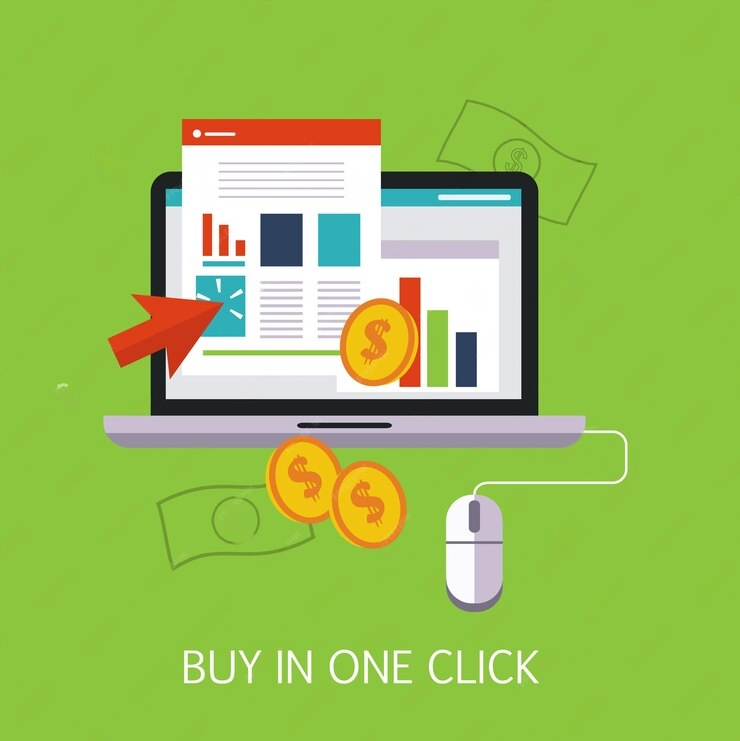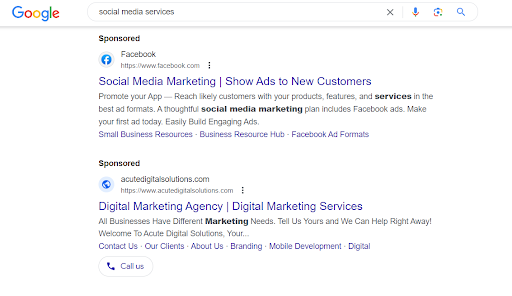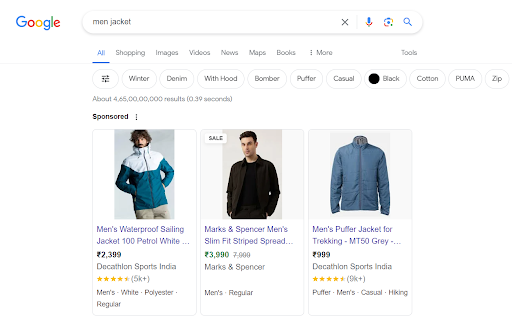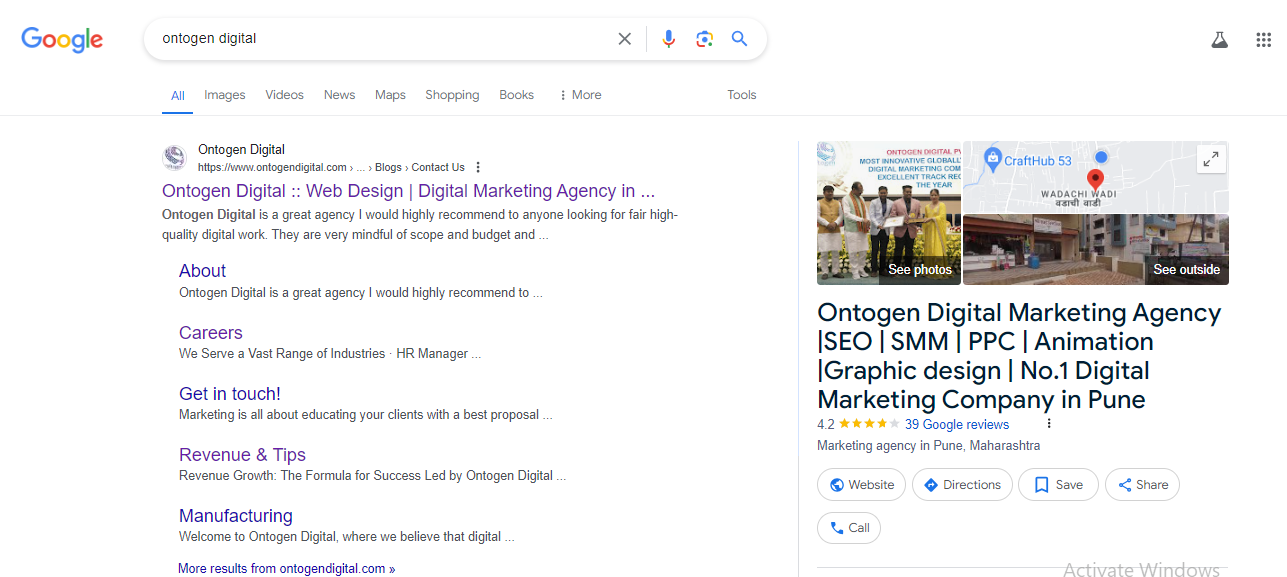27 June 2024 |
By - Sudha Mariappan

In this ever changing digital marketing outlook, businesses are always out looking for engaging ways to reach out to their target audience and finally hit the desired marketing goals.
This heavily involves advertisements, among other forms of marketing. The main form of advertising being paid ads.
But are paid ads really as effective as they claim to be?
Among these effective and highly used methods comes PPC advertising. Let’s see how Pay Per Click Advertising helps you create and design compelling PPC ads that drive traffic and conversions to your business.
What is PPC advertising?
Basically, a pay per click plan is a digital marketing model where the advertisers have to pay a charge every time someone clicks their advert.
As opposed to older systems of advertising, where payment is based on the number of ad placements or impressions, PPC requires an advertiser to pay only when a user clicks on their ad.
How does this help?
In this way of advertising, businesses can effectively manage their advertising budget as it targets specific demographics and interests. They don’t have to go around and put up their advertisements in hopes of viewers clicking on their ads.
Search ads:
These text-based ads resemble standard link listings in the SERP, complete with the usual elements like website name, favicon, page title tag, and meta description. As you can see in the image below, several sponsored results for " social media services" show up in the results before the top-ranking organic link.

Shopping ads use information from product feeds in the Google Merchant Center, as opposed to Search ads, which advertisers create from scratch using original copy.

Pay Per Click works through placing your ad on search engines. For example, Google and Bing, the two best search engines available. You can use those search engines where when a person searches on a relevant keyword based on your brand, your brand’s advert should pop up. When the said person clicks on the advert, you have to pay a small amount to the search engine.
Social media networks such as Facebook and LinkedIn also have the means to Pay Per Click advertising. The most spread PPC ad format is a search engine ad that appears in search engine results pages (SERPs) whenever users look for relevant keywords.
For example, if you have a coffee shop and somebody searches for "best coffee shop near me," your ad can be at the very top of search engine results if you've bid on keywords related to coffee shops. You just pay when somebody clicks on your ad, so in effect, it's usually pretty cheap for customer acquisition.
This involves some processes to hit on a successful PPC campaign, from understanding the target audience all the way to creating compelling ad design, perfecting the landing pages. Here is a step by step guide on how to do it.
Knowing Your Audience:
Knowing your target audience is a basic step of any successful PPC campaign. This means knowing who your ideal customers are, what to look out for, and how it is that your product or service can help quench their needs. What this really comes down to is researching demographics, interest, and online behavior for an audience by using tools such as Google Analytics, social media insights, and customer feedback.
Choosing the Right Keywords:
The keywords comprise all the terms and phrases that searchers type into search engines and directories. Choosing the right keywords is critical in this case because the result of it invariably decides whether or not your ad will be shown, and if shown, then at what position.
Use the research tools Google Keyword Planner, Moz, SEMrush to figure out which ones are relevant to your business and have a big enough search volume.
While doing this, make sure you go for both broad keywords and long tail ones deriving from a wide range of keywords so that you may reach an audience and target queries that are very specific in nature.
Setting a Budget and Bids:
One major reason to use PPC advertising is that it helps you keep your advertising expenses under control. You should decide how much you have the capability to pay for your campaign and then set daily or monthly budgets according to that. Most of the PPC systems run on an auction based approach, in which you bid for keywords.
The quality of your ad, combined with the bid, determines the placement of your business ad. So as a business owner, start small, then adjust your bids after seeing performance data.
How to create ads that get clicks: Write Like a Pro
The success of any PPC campaign is pegged to one key element. How good is your ad copy? Your ad needs to appeal visually, be brief in nature, and align with the user's search intent. Here are some ways to write great ads that drive clicks:
Attention-Grabbing Headlines:
This is the very first thing that the user will see. As such, the headline should arrest your attention immediately. Action-oriented words and a sprinkle with what major keyword besides relevance within the headline to the user's search it makes. Here is how you can write catchy headlines.
For example, if you are focused on selling organic skincare products, then a headline like "Feel the Nature: Get Natural Beauty with Our Organic Skincare Line" may seem much more magnetically attractive than some plain and generic headline.
Write Persuasive Descriptions:
The ad description has to give more information that will be tantalizing to users. You can brainstorm and highlight different benefits brought by a product or service, solve various problems, and add a clear call to action.
For example, "Glowing, healthy skin is just one step away. Shop from our organic skincare line today and get free shipping on your first order!"
Using Ad Extensions:

Ad extensions are just extra pieces of information included along with your ad to make it more noticeable. These include site links, call buttons, location information, and extra text. Ad extensions are used to provide more value and increase the chances of a user clicking through an ad.
Also Read: 7 C's of Digital Marketing: Your Guide to Online Success
How to Use Landing Page Launchpad to Design Landing Pages That Convert:
A really effective landing page is crucial to convert clicks into leads or sales. It is basically where users end up once they click your ad.
It should be fashioned and optimized based on the needs of the user and what they are supposed to do next in taking action.
How to get an effective landing page? You can read our blog on how to optimize the landing page for better results.
By being relevant and consistent on your ad journey.
Be sure to match ad copy with your landing page content. If you have an ad that's displaying a discount for any particular product, make sure that on the landing page, that product and discount clearly come out front and center. That'll make sure there's consistency, help in building trust and increase conversion chances.
Clear Call to Action:
Add clear and compelling CTAs in your landing page regarding what the user should do next. Whether that is completing a form, making a purchase, or signing up for a newsletter, the call to action element should come into clear view and easily be completed.
Simplified Design and Navigation:
An overloaded landing page can seriously overwhelm users and kill conversion rates. It is good to keep your design simple and clean so that the desired action really shines. Don't give your visitors any kind of distractions, smoothly and nicely hide all the non essential elements.
Mobile Optimization:
As mobile devices are used more and more, let's take some care that your landing page is mobile friendly too. Make sure it looks good and functions properly on every screen with responsive design. Test your landing page for any possible issues in different devices and optimize the loading times.
Analyze and Improve Your Campaign:
The success of the said campaign will be from the continuous monitoring and optimization of the PPC campaign after it goes live. Track significant metrics with the analytics tools offered by a certain pay per click platform.
For example, with the help of any pay per click platform's analytics tools, you can track important metrics such as CTR, Conversion Rate, or Cost per Conversion. You can also use that information to tell what works and what doesn't. When you get the performance insights, adjust your keywords, ad copy, and landing pages accordingly for more effective campaigns.
A/B Testing:
A/B testing, also known as split testing, involves running several ad and landing page variations to help determine the best performing version. Test your ad headlines, descriptions, and CTAs against design elements to find out what will best relate to your audience. Use those results to refine your campaigns for better conversion rates.
Manage Bids and Budget:
You will have to fine tune the bids and budgets with the performance data so that you can be assured of maximizing returns on the investments. Maximize returns on investment by increasing your bids on keywords with fine performance and lowering them on underperforming keywords. Be assured of great value for your pay per click investment through the budget, where you have to go through from time to time and adjust accordingly.
Pay-Per-Click is a very effective way through which relevant traffic can be generated and measurable results are obtained out of any business willing to leverage its power.
You can really take advantage of the power of PPC to grow your business if you understand the basics of it, write attractive ads, and maintain constant optimization of campaigns.
Start your journey with PPC today, and watch your business rise to new heights in this flexible model of advertisement. Connect with us at info@ontogendigital.com. Subscribe to us for more blogs.